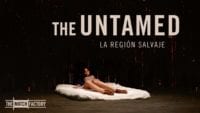Hello, Creepshow fans, episode two of the second season is upon us today and, of course, we couldn’t be more Horror Obsessed with it (obviously). The two newest tales entering the Creepshow universe today are Axelle Carolyn’s fantastic tale of a horror lodging (available with its own resident Psycho) in “Dead and Breakfast” and Greg Nicotero’s philosophical bug parable “Pesticide.” This is a full-dive into this week’s episode, so if you have not watched it yet, consider this your warning: SPOILERS AHEAD!
“Dead And Breakfast”
The horror subculture has two types of people: those who will stay in an ax murderer’s home and those who will refuse to enter. An oversimplification, truly—I mean, are you even a horror fan at all if you’re not willing to at least try spending a night at the Lizzie Borden house in Massachusetts or the Villisca House in Iowa? Or are you a more educated horror fan because, if this is a horror movie situation, you’re heeding the advice of that one person in the audience watching you?—the one shouting at the top of their lungs “Don’t go in there!” “Dead and Breakfast” asks you to consider your options when planning for your next vacation because it could end up being murder.
In the Spinster House, the rates are low, and the rooms are collecting dust—seriously, business is deader than old lady Spinster’s supposed victims. Old Lady Spinster is said to have created a puzzling house crafted with steel walls designed to help her trap and silence those she intended to kill. The only problem: it’s all alleged to have happened. No bodies were ever found. This makes it hard for true-crime tourist trappers and brother-sister descendant business owners Pam and Sam Spinster (Ali Larter and C. Thomas Howell) to make a living off of their family name.
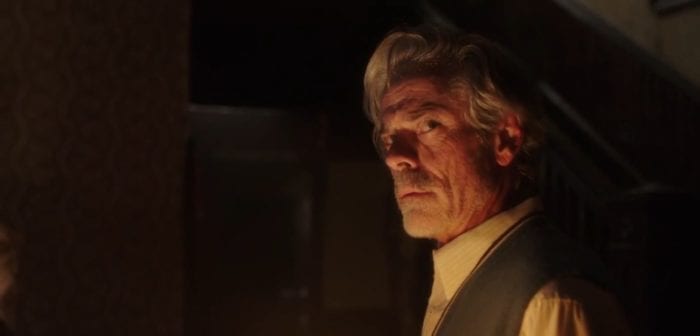
Writers Michael Rousselet and Erik Sandoval propose a “what if” regarding the outcome of Lizzie Borden‘s trial. Borden was accused of viciously murdering her father and stepmother with a hatchet in their Fall River home in 1892. Though Borden’s testimonies were varying in consistency and there was a fair amount of evidence against her, a jury voted to acquit Borden of the charges. Due to the grisly nature of the crimes, Borden became widely known in the public, but it’s through a poem that she’s remembered as an ax murderer.
“Dead and Breakfast” mashes Borden’s story together with the fascinating legend of the Winchester House whose proprietor Sarah Winchester was told by a medium to build a house for herself and the spirits of those who’ve fallen victim to Winchester firearms. Construction is said to have lasted thirty-eight years, and the home became more of a puzzle with every renovation. Eventually, the home would contain rooms with staircases leading nowhere and doors that, when opened, would only reveal the wall behind it. This was all to confuse spirits that Sarah thought lived in the home.
The Spinsters don’t see eye to eye on their business model for what horror hospitality should be. Pam aggressively stands up for their grandmother, insisting that she was a serial killer and becoming hostile whenever someone considers that her grandmother may have been a little crazy. She is persistently insistent in the way a child would argue about the existence of Santa Claus. Meanwhile, Sam attempts to simply earn a living and provide a theatric and entertaining atmosphere for any guests. As the two marvel over the fact The Lizzie Bord-Inn and John Wayne Gacy Circus Tent are selling out on a nightly basis, they entertain the idea of enlisting the help of a social media influencer (Iman Benson) to potentially expedite them out of a loop of never-ending vacancies.
Now, I love to travel, but I’m not big on the idea of bed and breakfasts. Personally, I find the whole setup to be more than a little awkward. Come to our cozy house, stay in the room next to ours, there’s only one bathroom that four couples are using, and I hope you like the odds of meeting strangers who see the world through archaic “back in my day” eyes because you’re going to share a bunch of your meals with them and their outdated views. As something of an awkward human, there is nothing scarier to me than an uncomfortable experience such as this.
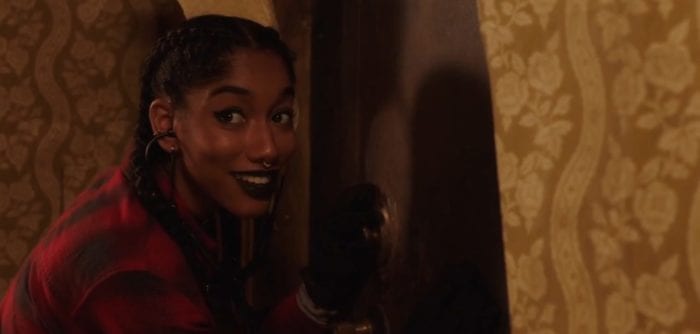
Speaking of awkward, that’s exactly how the Spinsters act from the second their horror house hopping influencer Morgue arrives. With a lighter atmosphere at the start, the Spinsters are elated as her presence fuels a wave of new reservations in seconds, but Pam becomes domineering over what Morgue is streaming to her viewers. There’s a reason for conversation through the subtle bit of political satire baked into “Dead and Breakfast” with the arrival of the open-minded traveler. Morgue debunks every one of Pam’s attempts to spread propaganda about the Spinster House, and when her narratives cannot be pushed onto Morgue, Pam finds a way to turn her occupant into an unknowing hostage by turning off the Wi-Fi in an otherwise signal-less house. Even as Morgue tries to extend the proverbial olive branch and join the Spinsters on a hunt for secrets through the house, the search becomes a vehicle for Pam to ruminate further on delusions about her grandmother to protect their family’s infamy rather than come to terms with facts.
When people like Pam become confronted with the truth, they become embarrassed and angry. It’s hard to let go of a cherished tradition or old notions of how the world works. Also, let me make this clear: hope is far different from belief. I can hope for this world to have a supernatural aspect about it, even if I don’t necessarily believe in it, and I can still find the horror genre a fun place full of dreadful and shockingly fun ideas, even if I find them beyond belief. Denial has become a part of Pam’s life though, and her ire gets the better of her whenever words synonymous with crazy are mentioned around her. Now that she’s truly doubting her long-held beliefs, could that not be true either?
The finale of “Dead and Breakfast” is fantastically ironic. With Pam wearing her grandmother’s garments and hairstyle (Norman Bates wants his schtick back), she chases Morgue through a Winchester labyrinth of doors that lead nowhere. Morgue finds the modem outside one of the rooms and reconnects the Wi-Fi, calling out to any viewer that can hear her on her stream. As Morgue trips down the stairs, Pam catches up to her wielding the ax like the Lizzie Borden poem. Morgue gets her 40 whacks, and her viewers have a new macabre destination to visit. In realizing this, Sam steps out from the shadows and turns the homicide into an opportunity…I guess crazy runs in the family.
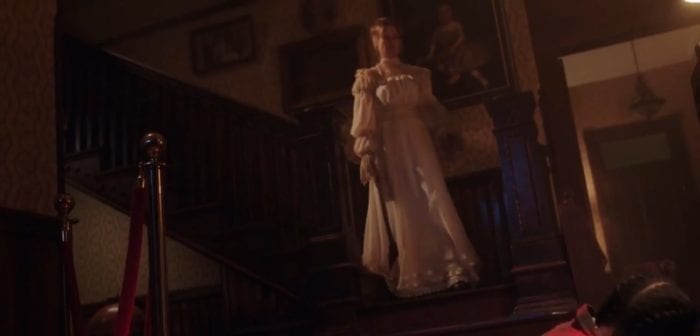
“Dead and Breakfast” reminds me a lot of 1408, where John Cusack goes around skeptically staying in America’s most haunted houses before meeting his match in the excessively supernatural Roosevelt Hotel. 1408 was a short story written by Stephen King before it was a film, and that’s probably why a story like “Dead and Breakfast” fits in so well with Creepshow. In the end, Pam dies defending her grandmother and the family name by essentially becoming her instead of coming to terms with Morgue’s questioning of her beliefs. Morgue suffers Pam’s wrath for being overly inquisitive and not knowing when to stop, and her penchant for true-crime hotspots ends up making her a cautionary tale of finding exactly what she’s gone looking for. It isn’t lost on me that Pam turns out to be correct, and not every belief turns out to be wrong, either. What makes it fact over hearsay is the burden of proof—something they didn’t have enough of to convict Lizzie Borden at her trial. Though it could technically be what really happened, and she is still considered the prime suspect, we’ll likely never know for sure.
“Pesticide”
The second tale in this week’s episode, “Pesticide,” is really a throwback of biblical proportion. Writer Frank Dietz takes the “do unto others” parable and applies the concept to “all God’s creatures,” and Greg Nicotero returns behind the camera to direct The Walking Dead’s Josh McDermitt in a role you’ll likely not recognize him in right away. Admittedly, it took me a second to realize that the mullet-less, mustache-wearing exterminator was also technical engineer Eugene from The Walking Dead, and I think McDermitt deserves some credit for his vocal talents and hair stylings over the years.
McDermitt plays Harlan King, a self-important pest control owner who spends his days snuffing out vermin while spouting cheesy one-liners and slogans. Ignorant and crude, Harlan perceives himself as a badass, walking in on his customer Brenda’s (Ashley Laurence) therapy session and arrogantly announcing his arrival on properties as if his presence were a gift. After being dismissed by his employer due to his obvious actions while touting “professional courtesy” in a very tongue-in-cheek scene, the slighted King decides revenge is in order. He leaves his card for the customer along with a jar’s worth of roaches thinking on a jilted angle of, “she’ll be back, they always call back.”
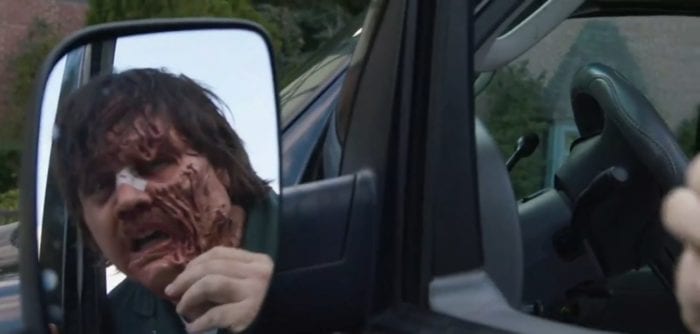
Keith David is one of those actors with a commanding presence. The man has over three hundred credits listed on his IMDB page, and whenever he’s on-screen, be it live-action or animated, you take notice. “Pesticide” is no different. David mystically appears before Harlan as property manager Mr. Murdoch, offering a briefcase full of money for Harlan to rid his textile mill of its current “infestation.” If the setup doesn’t seem obvious enough, these are not giant mill bats like in Stephen King’s Graveyard Shift, though it seems that is the twisted template that “Pesticide” uses for its ethical dilemma against a community of homeless people living on the grounds.
The story poses a couple of interesting questions: if one can so easily devalue insects and small animals’ lives, where does Harlan draw the line? And does he even contain an ounce of empathy for these creatures? If you consider the Macdonald triad, Harlan has already begun his evolution into becoming a murderer with a “cruelty to animals” phase. While interrupting Brenda’s therapy session, he does mention the death of a couple of birds as if it were nothing. I think people have the ability to desensitize themselves to most anything if it’s made to feel like a normal or mundane activity. For Harlan, killing pests is just business, and though the “pests” Murdoch is asking be exterminated are people, Harlan has to consider the task like exterminating much larger rodents or spiders to keep up the acceptability of the request. In essence, Murdoch is only asking Harlan to do what he already does best.
Cunning dialogue and fantastic camera work throughout the scene between Harlan and Murdoch capture the moral perspective of Harlan’s conscience. Without the benefit of the angel on his shoulder, while he speaks to the devil in Mr. Murdoch, Harlan’s own adjustable moral scale is all he has to combat the idea. Harlan’s eventual decision with Murdoch finds him back at the building later in the evening with a belt of poisons draped around his shoulder like he’s Schwarzenegger in Commando. The morality of the decision hangs in the air, and Harlan decides not to go through with it.
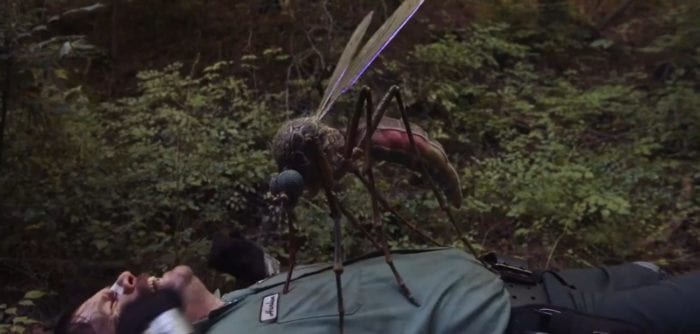
Of course, this is Creepshow, and it’s not like the decision is Harlan’s to make anymore. His fate was sealed the moment he made the deal with Murdoch. When he is jumped from behind by one of the occupants, the scene suddenly mirrors Nicolas Cage’s final fight scene in The Rock, with Harlan breaking the jar of poison in the homeless man’s mouth. Instantly, the attacking man becomes lifeless (homicide by pesticide is also “Pesticide”), but Harlan’s task is unknowingly accomplished as poison seeps into the community soup and, like an insect bait trap, Harlan rids the facility of its colony.
With Creepshow, karmic retribution is embedded. Harlan now faces the wrath of his victims—they’re just not the ones anyone would have initially considered. As I previously suggested, Harlan has to think of the people squatting at the mill as larger versions of the bugs and rodents he kills for a living, so wonderful creature creations from Nicotero’s creature shop, KNB EFX, begin terrorizing Harlan in the form of giant rats, mosquitos, and spiders. This kind of puppeteering and practical effects style reminds me of midnight films like Ticks and Mosquito, two films I’d highly recommend for anyone else out there that enjoys squirmy bug horror.
Having nowhere else to go, Harlan arrives on the couch of his former customer. After Brenda very sinisterly mentions her new roach problem, Harlan is left to sleep in the room for a moment. He awakens to the very intentional use of butterflies on the wall of the therapist’s office, there to denote her possible involvement in Harlan’s predicament. But Murdoch’s return to the episode, dressed like Harlan and providing a maniacal laugh while the walls go into the Creepshow signature red swirling background lights, drives home the concept that Brenda also made a deal with the devil. Harlan’s ultimate fate is a wonderfully bookended juxtaposition to his presence from the start of the episode: the larger-than-life arrogance of a man is made small and then crushed like an annoying pest, something he was right from the start.
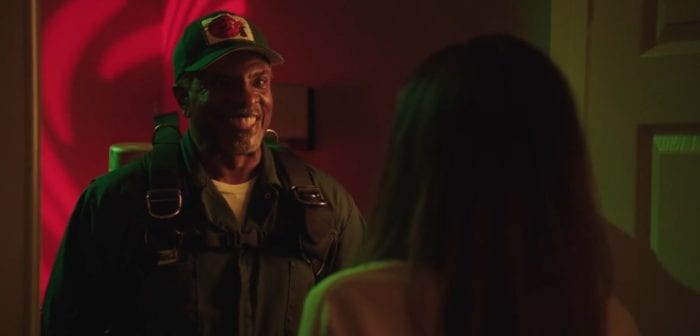
I’m thrilled to have Creepshow back, and though I think last week’s “Public Television of the Dead” will be a tough tale to top for the series, both “Dead and Breakfast” and “Pesticide” are supremely entertaining and fantastic entrees. The show continues to delight, surprise, and provide gory, twisted lessons that continue to make its source material proud. The efforts made by superb casting choices, fantastic direction, beautiful effects and makeup artistry, and great stories along with a consistently dark sense of humor have so far surpassed most of last season’s episodes. I hope this continues to be the case. Next week, the comic book preview shows us going to space with a handful of astronauts battling a Lovecraftian monster, and I’m already excited for what that might entail.



